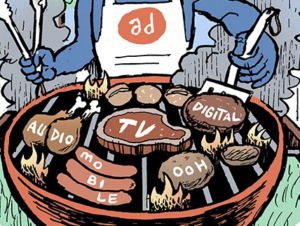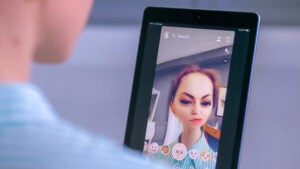“On TV And Video” is a column exploring opportunities and challenges in advanced TV and video.
Today’s column is written by Lindsey Harju, co-founder at Blinc Digital Group.
2018 may look similar to years past, with cross-channel acquisitions a seemingly regular occurrence.
But for me, 2018 will stand out in the history of advanced TV because of the aggressive moves made by one company in particular: AT&T.
Tech and TV companies have both been slowly stockpiling their arsenals over the years, getting ready for the inevitable convergence of channels for advertisers.
In 2014, for example, Facebook acquired LiveRail, Yahoo bought Brightroll and Comcast bought Freewheel.
In 2016, Adobe acquired TubeMogul, and earlier this year, Amobee acquired Videology.
But AT&T’s 2018 acquisitions essentially grow its stockpile to the size of a small warring country – capable of world domination so long as its battle strategy is sound.
Verizon’s acquisitions of AOL and Yahoo look similar, with wireless, internet, TV and digital advertising coming together. But the combination still isn’t quite as powerful as AT&T’s when it comes to the battle to own advanced TV at scale, underscored by Verizon’s recent decision to write down the value of Oath, which encompasses AOL and Yahoo.
Let’s open the war chest and unpack all the pieces AT&T now has in its arsenal.
Network Inventory: AT&T completed its acquisition of Time Warner in June, giving it content from networks such as TNT, TBS, HBO and CNN.
MVPD subscribers and tech: AT&T has the power to deliver the content to consumers’ homes, both through large paid packages with DirecTV and smaller over-the-top or skinny bundle services, including DirecTV Now and its 2018 introduction of WatchTV.
Wireless subscribers: AT&T’s consumer relationships extend even further, and arguably much more intimately, into wireless service, with 142 million subscribers in the United States.
ISP Subscribers: Consumer relationships don’t stop there. AT&T also holds a position as an internet service provider in 21 states and the largest DSL provider in the country. Talk about a sizable deterministic dataset.
Ad technology: On the marketer’s side, AT&T has recently centralized its offerings under Xandr, which includes addressable capabilities from its AT&T Adworks division, in combination with its newest member of the family: AppNexus.
Essentially, it has a larger and more robust weapons cache than other advertising behemoths, including Facebook, Google or Verizon. And its position as an ISP may be the secret weapon, with the tragic death of net neutrality regulation by the FCC earlier this year. If I weren’t more pragmatic, I would imagine Pinky and the Brain behind the whole scenario.
The question now is whether or not it will take advantage of all of these separate game pieces and move them together in unison to make advertising magic happen. Perhaps it will learn from Verizon’s missteps in order to advance further in cross-media domination. On top of already holding the spot as the second biggest advertiser on the planet, AT&T could also be the largest adverting platform out there – and arguably even the best deterministic identity graph.
As someone who enjoys witnessing excellence, I hope AT&T can pull it off, especially in the world of advanced TV, which is becoming more exciting as more data is injected. AT&T’s biggest adversary will be its own tremendous size. Publicis launched Marcel this year to coordinate its own 80,000 employees, so AT&T may want to think about how to connect its nearly 300,000 employees if this plan is actually going to come together.
From my perspective, AT&T wins the award for the strongest power moves in 2018. But 2019 is right around the corner, and since this industry moves so quickly, it’s anyone’s game.
Follow AdExchanger (@adexchanger) on Twitter.













